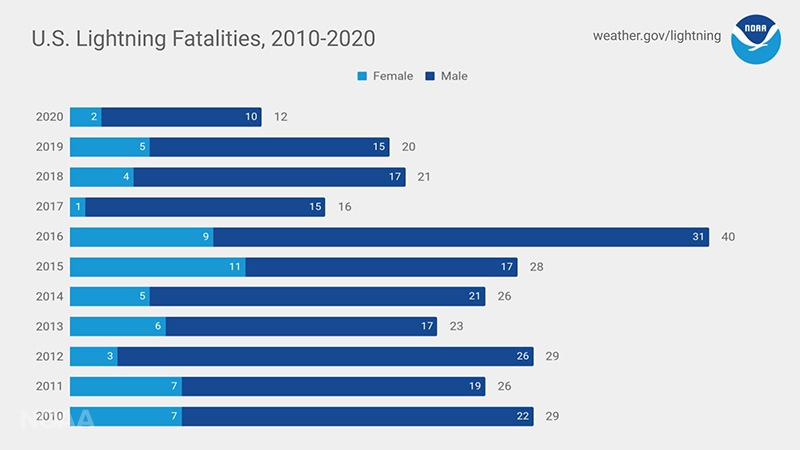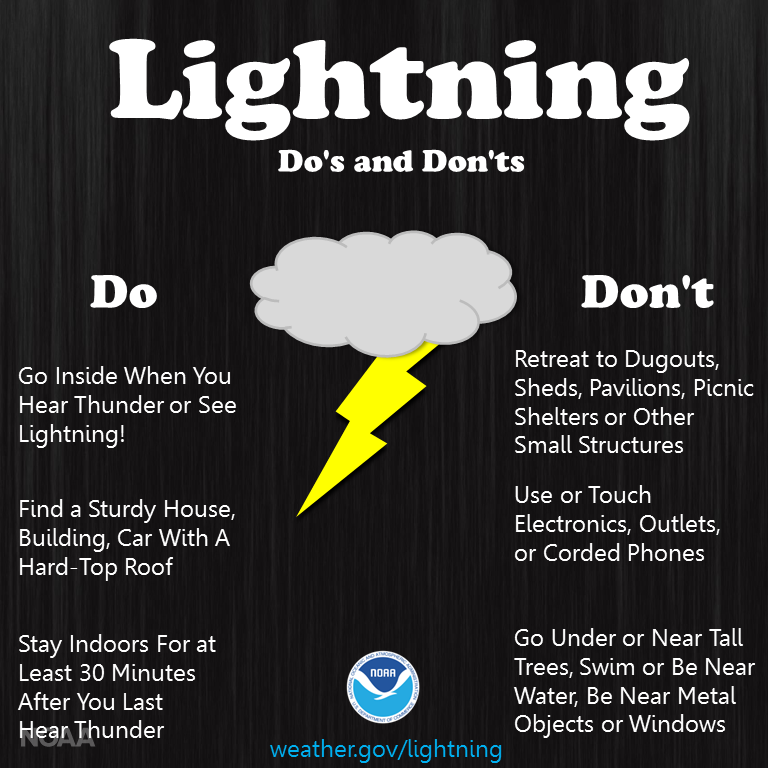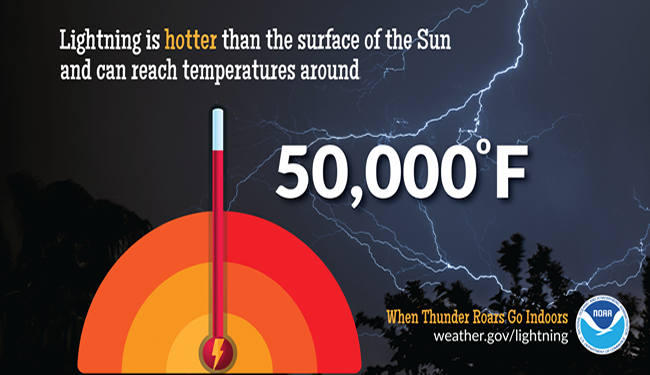Striking Facts Versus Myths about Lightning
[Lightning strikes Citibank Ballpark in Midland, Texas. (Courtesy of Brian Curran/NOAA National Weather Service)]
[Written by NOAA] It might be cool to look at from a safe distance, but lightning kills more than 20 people each year in the United States and injures hundreds more — with some survivors suffering lifelong neurological damage. Lightning is a random act of nature that can strike at any time of the year, most often during summer months. So far this year, there have been 26 people reported to have been struck by lightning; 12 of those people died.

[As of August 18, 2020, 12 lightning fatalities have occurred this year. (NOAA National Weather Service)]
One thing that is for certain: No place outside is safe during a thunderstorm. This is why we always say, "When thunder roars, go indoors."
What else should you know about this electrical wonder of nature? We debunk 5 popular myths with science-backed facts about this dangerous and often misunderstood phenomenon.
1. Myth: A tree can act as sufficient shelter during a thunderstorm.Fact: No. Standing underneath or near a tree is the second most dangerous place to be during a thunderstorm; the most dangerous is being outside in an open space. An enclosed building with wiring and plumbing is the safest place to be during a storm. Remember: Trees, sheds, picnic shelters, tents or covered porches will not protect you from lightning.

[NOAA's GOES-East (GOES-16) satellite watched 10 hours of lightning using its Geostationary Lightning Mapper (GLM) in Florida on August 18, 2020, shown in this 3-second time-lapse video.The area spanning Tampa Bay to Titusville, Florida (a.k.a. Lightning Alley) receives the most yearly lightning in the U.S. Did you know that 90% of the lightning in this area occurs from May through October? Stay safe out there! (NOAA Satellites)]
2. Myth: Lightning victims carry an electrical charge. If you touch them, you can be electrocuted.
Fact: Not true. The human body does not store electricity. If you are able to, you should give a lightning victim first aid and/or immediately call 911. This is the most chilling of lightning myths because it could be the difference between life and death.
3. Myth: If you are trapped outside during a thunderstorm, crouching down will reduce your risk of being struck by lightning.
Fact: No. Crouching down will not make you any safer. If you are stuck outside during a storm, keep moving toward a safe shelter.

[Infographic: What to do and not to do when you see lightning. Note: This image and associated text can be found online at www.weather.gov/lightning. (NOAA NWS)]
4. Myth: Lightning never strikes in one place twice.
Fact: Actually, lightning can, and often does, strike the same place repeatedly — especially if it’s a tall and isolated object. For example, the Empire State Building is hit about 25 times per yearoffsite link.
5. Myth: Lightning cannot strike in an area if it is not raining and skies are clear.
Fact: Not true. Do not wait until a thunderstorm is immediately overhead and for rain to begin to act. If you can hear thunder, lightning is close enough to pose an immediate threat, even if the sky above you is blue. If thunder roars, seek shelter immediately.
